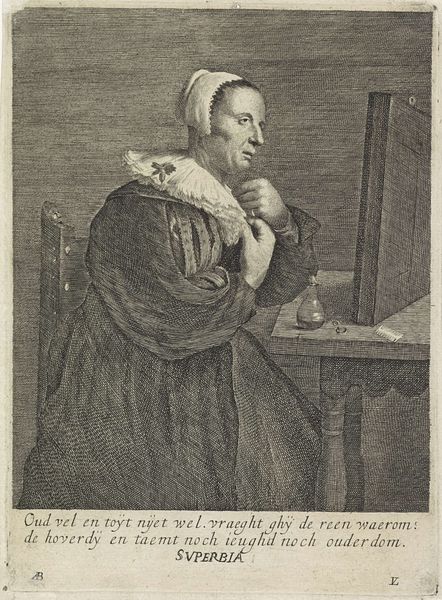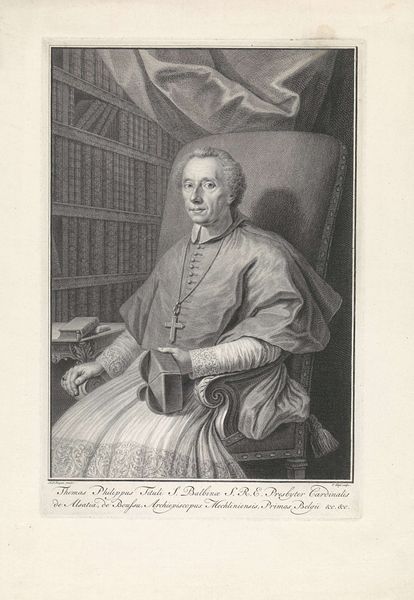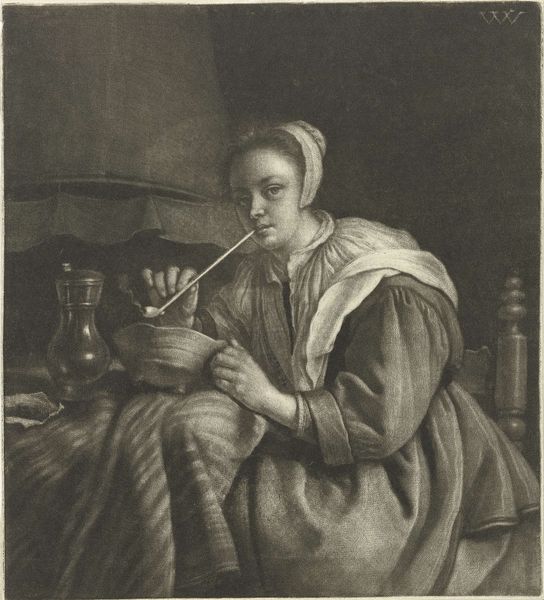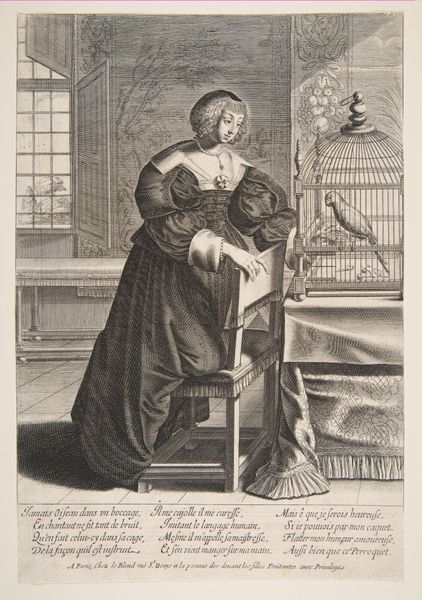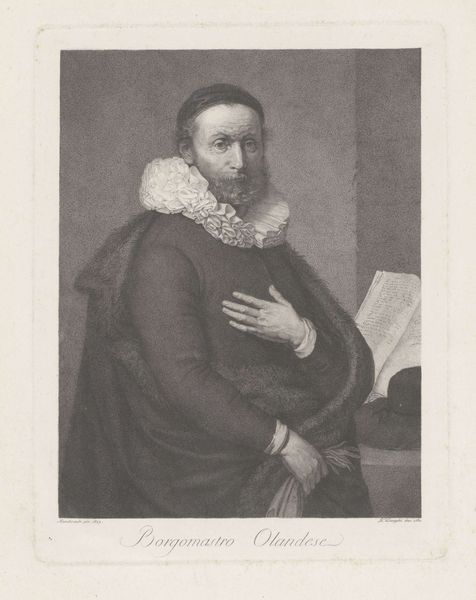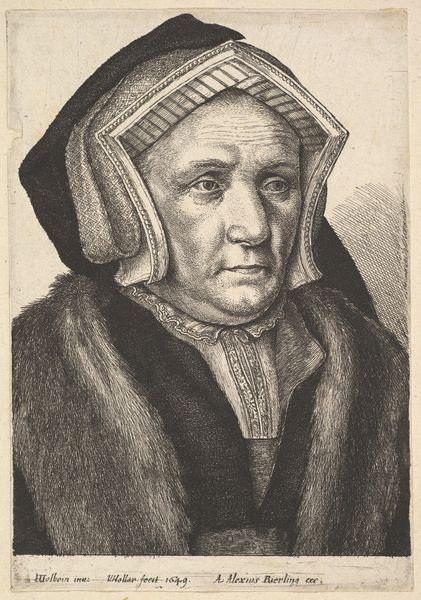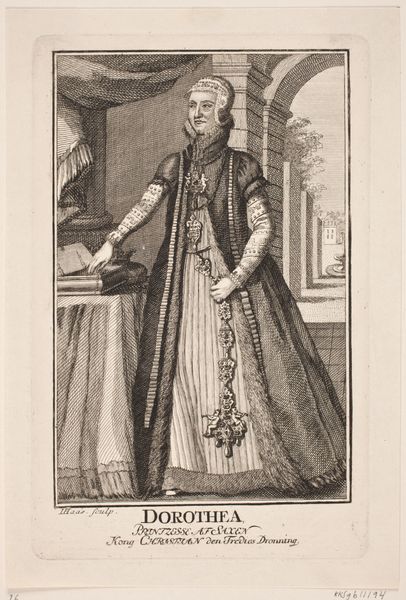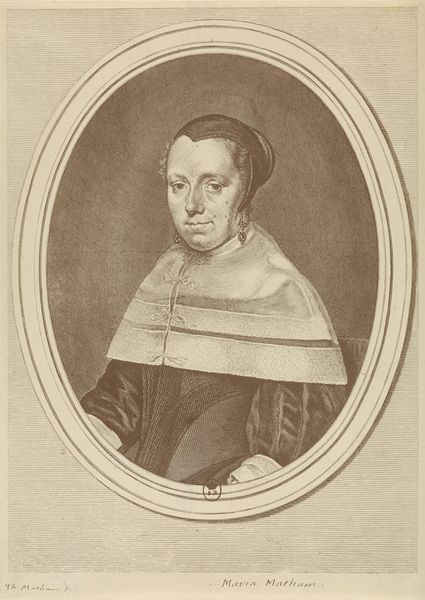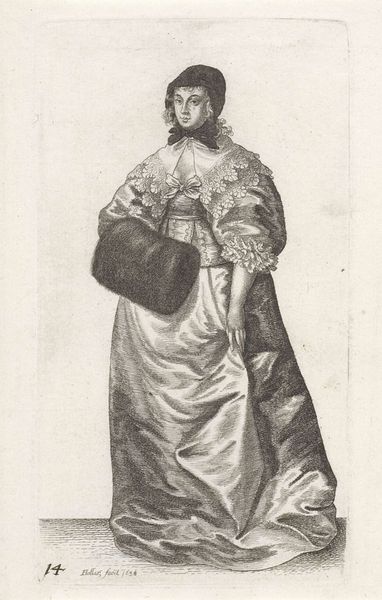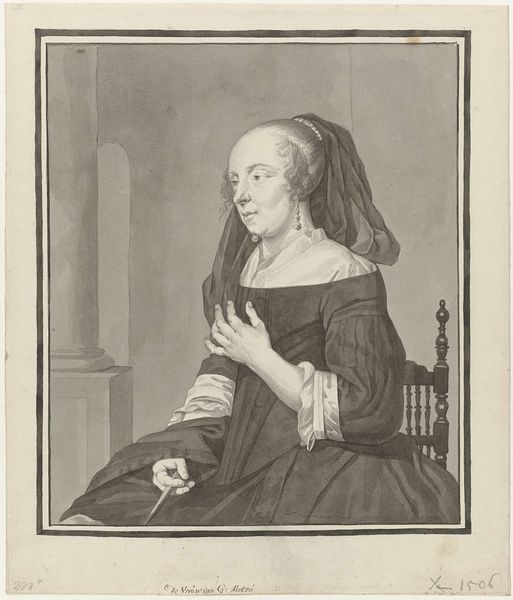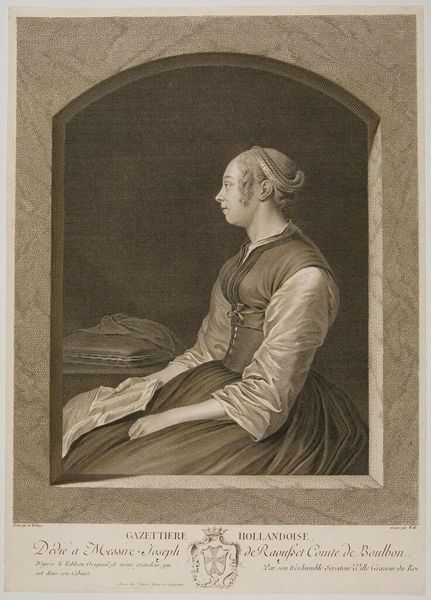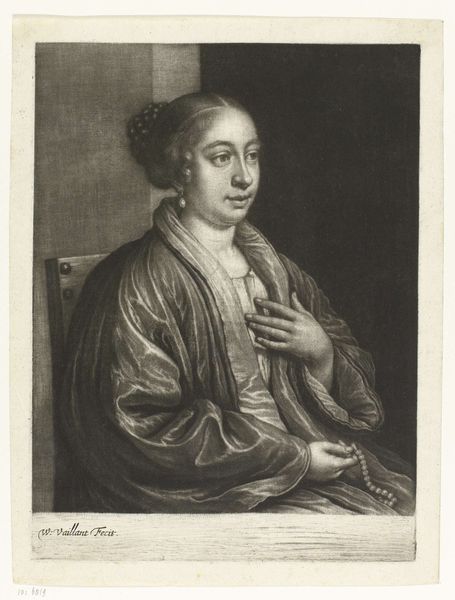
print, etching
#
portrait
#
self-portrait
#
baroque
# print
#
etching
#
charcoal drawing
#
mannerism
#
charcoal art
#
historical photography
#
portrait reference
#
vanitas
#
genre-painting
Dimensions: height 194 mm, width 141 mm
Copyright: Rijks Museum: Open Domain
Editor: Here we have Lucas Vorsterman's print, "IJdelheid (Superbia)," dating from 1619 to 1675. It's currently held at the Rijksmuseum. The composition feels quite intimate, depicting a woman gazing at herself in a mirror. What strikes me is its seeming simplicity. How would you interpret this work within its historical and social context? Curator: That's a great starting point. Considering this print's probable association with the 'vanitas' theme, let’s consider the societal messages about women and morality during the 17th century. Notice the detail of her attire and jewelry, indicators of status, presented alongside the mirror and vanity items. How might the display of wealth and self-regard have been perceived then, especially in light of religious doctrine? Editor: So, is the artwork offering a commentary on societal values? Is it criticizing vanity, or is there something else going on? Curator: It’s definitely a commentary. Works like this served a public role, functioning as moral reminders. This was the era of the Dutch Golden Age, a time of immense wealth alongside a rise in Calvinist influence. Prints such as this encouraged viewers to consider their earthly attachments and reflect on what truly matters beyond fleeting beauty and material possessions. The institution of art at that time served a very clear, often didactic, purpose. Editor: It’s interesting to see art being used to reinforce social norms and even potentially critique wealth during a time of economic prosperity. Curator: Exactly! Think of it as a form of visual social commentary, readily disseminated through prints to a wide audience. Editor: That’s given me a totally different understanding of this work! I was too focused on the individual and missed the broader socio-political implications. Curator: Indeed. It shows how much context can shape the meaning of an artwork. I, in turn, am reminded of the powerful connection between art and the societal forces at play during its creation.
Comments
No comments
Be the first to comment and join the conversation on the ultimate creative platform.
